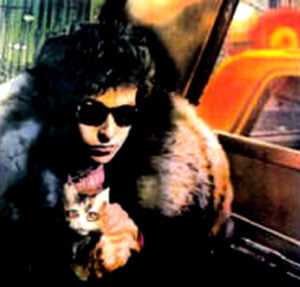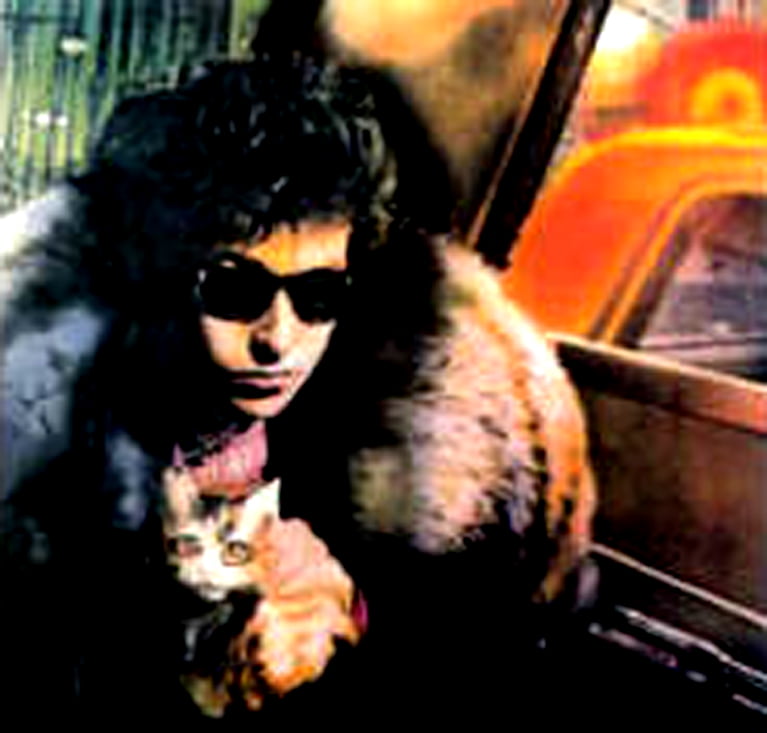In ancient Greek religion, Nemesis,also called Rhamnousia or Rhamnusia (Ancient Greek: Ῥαμνουσία;”the goddess of Rhamnous”), is the goddess who enacts retribution against those who succumb to hubris, arrogance before the gods.
Wikipedia

THE GODDESS NEMESIS
Positively 4th Street occupies a unique place in Bob Dylan’s oeuvre. It was recorded at the Highway 61 Revisited sessions but kept back for single release. Although musically similar to much of the material recorded for that epochal album, its lyrics differ greatly in terms of construction and technique. While the rest of the tracks are characteristically ambiguous and employ streams of diverse imagery, this song is couched entirely in colloquial phrases and its message appears to be completely unequivocal. As one of Dylan’s best known works, it regularly receives a prominent place in ‘Best of Dylan’ lists. Dylan has played it live on over a hundred occasions and it has been covered by a number of artists. Despite this, the vast majority of critics and commentators have focused not on the artistry of Dylan’s brilliantly crafted lyrics but on the notion that it consists of a venomous attack on Dylan’s supposed ‘enemies’ – especially the more conservative members of the ‘folk establishment’ who considered his ‘going electric’ to be some kind of ideological betrayal. But it is (almost) always a mistake to attempt to tie down any Dylan song by limiting it to being addressed to one person or group of people. In fact, Positively 4th Street may actually be Dylan’s most misunderstood song.

When assessing Dylan as a poet, it is always important to remember his control of melody and instrumentation and, most importantly, his dramatic presentation of lyrics all have an effect on how the words he sings stimulate listeners’ imagination and touch their emotions. Too many commentators attempt to separate Dylan’s lyrics from his performance of them. If one examines this song ‘on the page’ it certainly does come over as a vicious ‘put down’. But in order to understand the true poetic effect of the words it is necessary to consider that they are set against a sprightly vocal tone and a rather cheerfully hummable melody line. This song was, after all, designed to be a ‘hit’. In his delivery Dylan never sounds angry or bitter. Indeed, the sound of the original recording, dominated by Al Kooper’s swirling organ and Mike Bloomfield’s distinctive guitar lines, is positively joyful. Thus the received meaning of the lyrics is modulated, which surely should lead the listener to question the veracity of the narrative.
The first verse sets the tone for the rest of the song, throughout which the counter posing of the sweet melody and the pained lyrics continues. The next four verses continue to reiterate the message, using the same light irony in the delivery while that organ sweeps us along …You say I let you down, you know it’s not like that… There is certainly a ‘knowing’ tone in the voice now. Even the next line …If you’re so hurt, why then don’t you show it?… is delivered with defiant panache, with Dylan extending the last word triumphantly. Then, for a moment, it seems as if we may be turning to ‘serious matters’. …You say you’ve lost your faith… Dylan croons above the swirling organ. But any notion that the song is about to turn ‘religious’ is immediately crushed. …But that’s not where it’s at… Now he seems to be positively laughing at the pretentions of the object of the song. …You have no faith to lose… he cries, ending with another triumphant …and you know it!… Insult is added to injury now as what we can refer to as the narrator’s Nemesis is revealed as a fake ‘believer’. Dylan’s use of rhyming in the song is quite significant. Here ‘it’ is used as a rhyme with ‘it’ – a technique called ‘identical rhyme’ which Dylan uses in four of the six verses here. The effect is dryly ironic, and works to place further emphasis on the message that the narrator is piling up.

The next verse follows on logically from the last line: …I know the reason that you talked behind my back… Again the narrator claims to know the object of the song better than he or she does. …I used to be among the crowd you’re in with… There may be a passing reference to Dobie Gray’s mesmeric 1964 hit The In Crowd, an unashamed celebration of trendiness which, rather like Positively Fourth Street, is so unabashed in its declarations that in can easily be treated ironically, as Bryan Ferry (the master of ‘pop irony’) does in his 1974 cover of the song. Again Dylan is using common contemporary phrases for ironic effect. This has often been interpreted as referring to Dylan’s former ‘membership’ of the ‘folk scene’ which, in ‘going electric’, he has just rejected. But Dylan is being deliberately unspecific here. The only ‘clue’ that really connects the song to this situation is the reference to ‘4th Street’ in the title. New York’s 4th Street runs makes up the southern limit of Greenwich Village – the epicentre of the ‘folk scene’ where Dylan made his name. But of course virtually every American city has a ‘4th Street’. The next lines are especially convoluted, as if somehow the narrator is now struggling to justify himself. He now seems to be losing the ‘cool’ he has maintained throughout the song so far. …Do you take me for such a fool to think I might make contact/ With the one who tries to hide what he don’t know to begin with… These lines, with their rather ‘forced rhyme’ of back/contact and the rushed enjambment to the final extended line, now begin to sound rather more desperate, as if the narrator is somehow losing control. Again the identical rhyme ‘in with’/’begin with’ testifies to a certain vulnerability that the narrator is now beginning to show. Here we have the only use of the gendered pronoun ‘he’; suggesting that the song’s object is not a female and that this is not, therefore, a ‘bitter love song’. But ‘he’, especially in those days, was often used as a generic term for both men and women.

4TH STREET, GREENWICH VILLAGE
The narrator now becomes increasingly petulant. In the next few lines he crams in an entire conversation, though he noticeably reports only the words that the Nemesis says to him. The compression here is quite brilliant: …You see me on the street, you always act surprised/ You say ‘How are you’ but you don’t mean it… again the narrator claims to know more about the Nemesis that he does himself. The following lines are perhaps the most vituperative of all: …When you know as well as me, you’d rather see me paralyzed… We can take ‘paralyzed’ in a number of ways – perhaps this is one of the singer’s detractors hoping his career will be cut short. Or perhaps the Nemesis is a truly demonic figure. In the final line Dylan demands …Why don’t you just come out once and SCREAM IT… By now the supreme confidence with which the narrator had begun is failing. He is beginning to lose control. Again the identical rhyme of ‘it/it’ (as in the second verse) adds emphasis to the sense of futility that is now being expressed.

By the penultimate verse the narrator appears to be directed the apparent sarcasm of the rest of the song towards himself. In another convoluted line he confesses …No, I do not feel that good when I see the heartbreaks you embrace… The juxtaposition of ‘heartbreaks’ and ‘embrace’ in this context is masterful. Both are commonly used words in romantic songs, of which Positively Fourth Street is the extreme antithesis. But then he lightens the mood: …If I was a master thief perhaps I’d rob them… This is the nearest the song gets to symbolism. But by now the narrator is sounding increasingly powerless and desperate.…Now I know you’re dissatisfied with your position and your place… he admits, juggling elements of assonance and alliteration around in a unique way. No ‘love song’, even one of rejection, has ever incorporated language like this. And then he admits his own helplessness: Don’t you understand… he pleads …It’s not my problem… This can be taken either as one of the cruellest lines of rejection ever or a heartfelt admission of his own inadequacy. For once the use of identical rhyme is dropped, adding emphasis to the cruelty of the word ‘problem’
In the extraordinary final verse the narrator finally confronts his Nemesis. Now he indulges in fantasy. …I wish that for just one time… he begins …you could stand inside my shoes/And just for that one moment I could be you… Then, for the first time since verse one we get a repetition for emphasis: …Yes I wish that for just one time you could stand inside my shoes… which is followed by the final awful line of dismissal: …You’d know what a drag it is to see you… This stunning denouement is highly revealing. If the narrator was merely wanting his Nemesis to see things from his point of view he might have asked him to imagine what it would be like to see things through his eyes – a typical fantasy of a victim. But Dylan goes further. His narrator imagines himself standing in his Nemesis’ shoes. Thus the final withering put down can be taken two ways. The Nemesis is meant to experience ‘what a drag’ it is when he sees himself. But the narrator is now apparently experiencing himself as the Nemesis. Either way, it is ‘a drag’…. Here the use of identical rhyme is both devastatingly effective and extremely appropriate.

Thus Positively 4th Street is thus far more than the rather nasty ‘put down’ of an ‘enemy’ or a ‘betrayer’ that it has often been characterised as. As the song reaches its climax, the multiple references to the narrator apparently ‘knowing his Nemesis’ mind’ build up. In the final verse he completes the process of identification by expressing the perverse wish to ‘swap places’ with him. Thus the two figures are revealed as being interchangeable. They are both, it seems, aspects of one consciousness and the song is thus an exploration of human psychological duality. The singer reaches deep into the darkness of his own soul and conjures up a figure who represents all the cruelty, dishonesty and ‘lack of faith’ that lie within. Yet in his treatment of the song in the original recording Dylan sounds triumphant throughout. In Like a Rolling Stone, the ‘hit single’ that Positively 4th Street was conceived as a ‘follow up’ to, what begins as an apparent attack on a particular individual (‘Miss Lonely’) is transformed into a universalist hymn to individuality. But here Dylan is more questioning, daring to ‘go deeper’ to confront those aspects of himself that he is not proud of.
Positively 4th Street is thus an extraordinary achievement which wholly subverts the conventions of the ‘pop song’, using colloquial language to confront fundamental existential dilemmas. It is thus never an easy song to sing. One can barely imagine Joan Baez attempting it. Lucinda Williams, a great ‘country-blues-rock’ singer who specialises in bitter emotions, does a remarkable cover which brings out the song’s biting intensity to great effect. Dylan himself once stated that he actually preferred a version by the ‘rockabilly crooner’ Johnny Rivers to his own reading of the song. Rivers’ version (1968) is indeed deeply empathetic. He abandons Dylan’s triumphant tone and makes the song sound winsome and tragic. Bryan Ferry’s reading on his album Dylanesque (2007) treads a similar path. Both versions seem to make us feel sympathy for the narrator, recognising that this is a song about a creative soul who is struggling with his own demons. Mick Hucknall of Simply Red also recorded an interesting version which treats the lyrics as a kind of soulful confession.
Dylan’s own live development of the song seems to indicate his own dissatisfaction with his original recording. It was originally featured in his first ‘electric’ sets with The Band. In a version performed in Sydney in 1966 he stretches out the lyrics into an extended drawl, very much as he does with other songs in the ‘electric’ set, as he battles with an uncomprehending audience. In that case one can see the song, much like the versions of Ballad of a Thin Man, I Don’t Believe You and Like a Rolling Stone as being directed to the ‘unbelievers’ in the crowd. Much later the song is featured prominently in the tours with Tom Petty and the Heartbreakers of 1986-87. Later it is performed on many occasions in the Never Ending Tour. In these versions Dylan appears to take Johnny Rivers’ lead, transforms the song into a tragic-comic confession of his own vulnerability. The song, which was once an expression of proud youthful defiance, now takes on a quality of ethereal beauty as the singer now confronts that inner Nemesis with the experience and the sad knowingness of age.
DYLAN LINKS
DAILY DYLAN NEWS at the wonderful EXPECTING RAIN
THE BOB DYLAN PROJECT- COMPREHENSIVE LISTINGS
STILL ON THE ROAD – ALL DYLAN’S GIGS



Leave a Reply